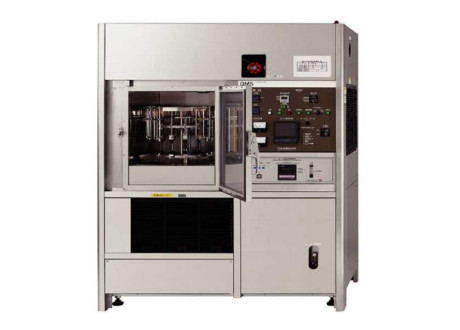Comparison and analysis of the difference between Xenon lamp aging tester and UV Carbon Arc weather

It is currently believed that the spectral energy distribution of the xenon arc lamp in the known artificial light sources is most similar to the ultraviolet and visible parts of sunlight. By choosing a suitable filter, most of the short-wave radiation in the sunlight that reaches the ground can be filtered out. The xenon lamp has a strong radiation peak in the near-infrared region of 1000nm~1200nm, which will generate a lot of heat. Therefore, a suitable cooling device must be selected to take away this part of the energy. Currently, there are two cooling methods for xenon lamp aging test chamber devices on the market: water-cooled and air-cooled. Generally speaking, the cooling effect of the water-cooled xenon lamp device is better than that of the air-cooled device. At the same time, the structure is more complicated and the price is more expensive.

Xenon lamp aging tester is a kind of latest, using the best light source, by replacing the filter cover, it can better simulate outdoor natural sunlight and sunlight passing through window glass. Xenon arc lamps were first used in the plastics industry. Because their test results can better simulate the actual weather resistance of products, many international standards, such as AATCC, ASTM, ISO, and government organizations all use xenon arc lamps. The textile industry is a traditional user of carbon arc lamps, and now it has also changed the specification to use xenon arc lamps.
UV Carbon Arc Weather Meter is currently less used in China, but it is a widely used light source in Japan, and most of the JIS standards use sunlight-type carbon arc lamps. Many Chinese auto companies that have joint ventures with Japan still recommend the use of this light source. The spectral energy distribution of the solar carbon arc lamp is also closer to sunlight, but the ultraviolet rays are concentrated at 370nm-390nm, and the simulation is not as good as the xenon lamp aging test box, and the acceleration magnification is between the xenon lamp and the ultraviolet lamp.
There are two types of carbon arc lamps, one is enclosed carbon arc lamps and the other is daylight carbon arc lamps. Both of these carbon arc lamps are used in early equipment. The former was originally used for textile lightfastness testing, and the latter was originally used for coating lightfastness testing. The luminous body of the enclosed carbon arc lamp is a set of carbon rods, through which electric current passes through the carbon rods to emit arc light. However, the spectral energy distribution (SPD) of the arc light emitted by the carbon rod is quite different from the SPD of natural daylight. There is neither short-wave ultraviolet radiation in natural daylight nor the high-intensity energy of daylight between 400-800nm. The matching of the SPD of daylight-type carbon arc lamp and daylight SPD has been improved, but there is still a big difference in the spectral distribution between 50 and 350nm between the two. Therefore, on the whole, the correlation between the test results of the carbon arc lamp and the actual weather resistance of the product is relatively poor. At present, some old standards or specifications still use carbon arc lamp equipment.
2021-12-02 10:45

